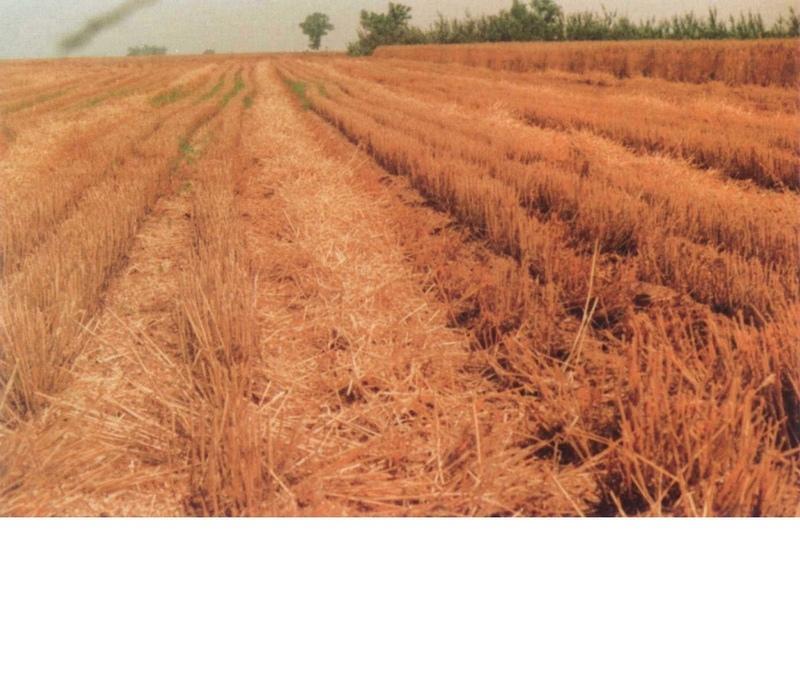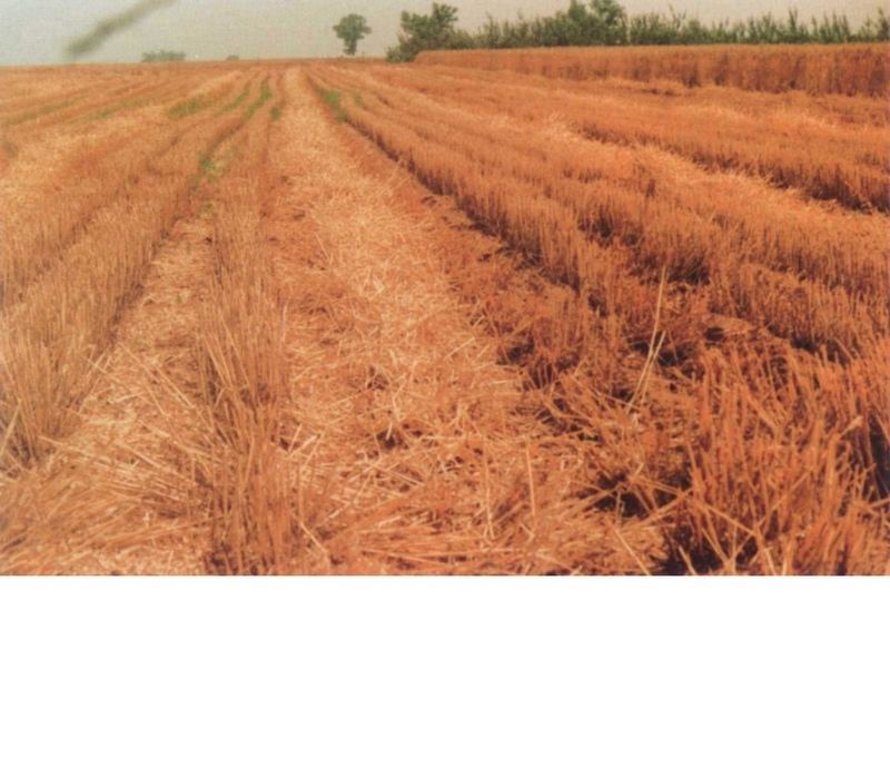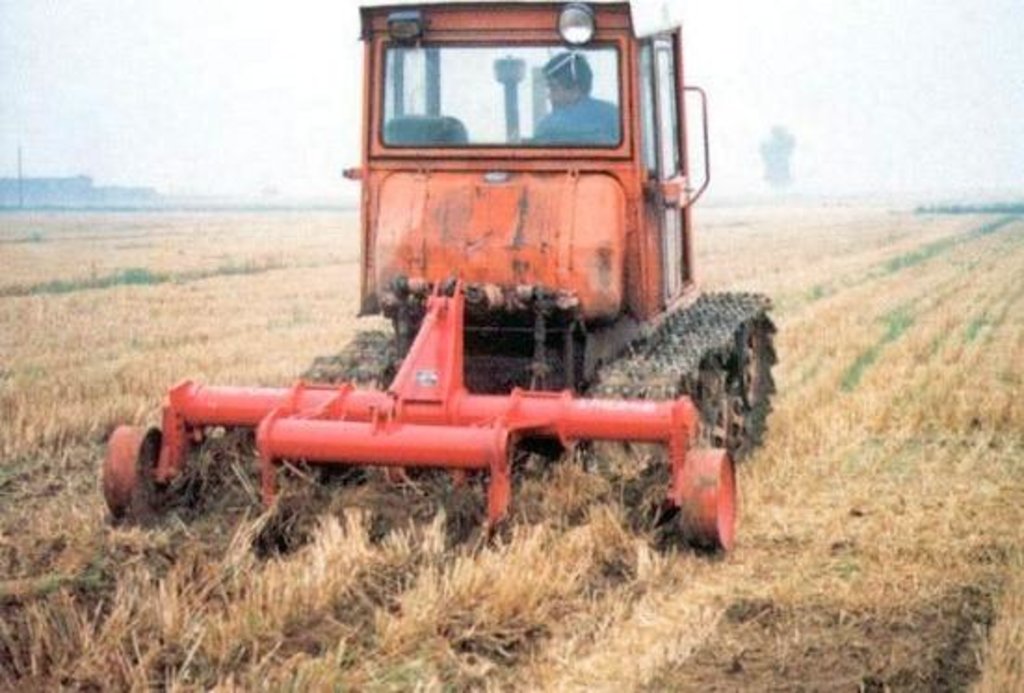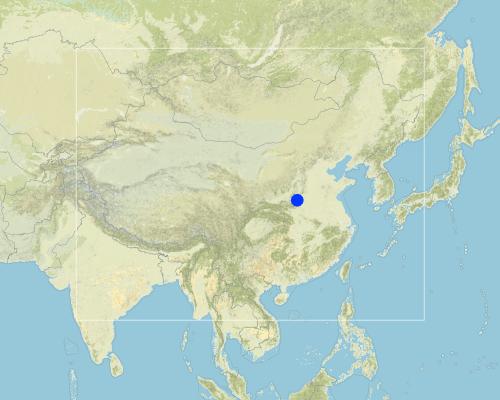Subsoiling [China]
- Creation:
- Update:
- Compiler: Zhanguo Bai
- Editor: –
- Reviewers: David Streiff, Alexandra Gavilano
Shen Song
technologies_972 - China
View sections
Expand all Collapse all1. General information
1.2 Contact details of resource persons and institutions involved in the assessment and documentation of the Technology
SLM specialist:
Name of the institution(s) which facilitated the documentation/ evaluation of the Technology (if relevant)
ISRIC World Soil Information (ISRIC World Soil Information) - Netherlands1.3 Conditions regarding the use of data documented through WOCAT
When were the data compiled (in the field)?
21/05/2002
The compiler and key resource person(s) accept the conditions regarding the use of data documented through WOCAT:
Yes
2. Description of the SLM Technology
2.1 Short description of the Technology
Definition of the Technology:
Subsoiling with mulching is cultivated using plough without disturbance of surface soils but loosing the subsoils.
2.2 Detailed description of the Technology
Description:
Subsoiling with mulching is one of the conservation tillage technology, it is to deep till to loose subsoils without disturbance of surface soils, it is combed with residuals coverage(straw). The purpose of the technology is to let all rainfall infiltrate in soil without runoff occur and incease soil moisture and organic matter content in order to raise yield.
2.3 Photos of the Technology
2.5 Country/ region/ locations where the Technology has been applied and which are covered by this assessment
Country:
China
Region/ State/ Province:
Henan province
Map
×2.6 Date of implementation
If precise year is not known, indicate approximate date:
- less than 10 years ago (recently)
2.7 Introduction of the Technology
Specify how the Technology was introduced:
- through projects/ external interventions
Comments (type of project, etc.):
USA, Canada
3. Classification of the SLM Technology
3.2 Current land use type(s) where the Technology is applied

Cropland
- Annual cropping
Comments:
Major land use problems (compiler’s opinion): Traditional tillage (multi-tillage) has made soil loose and easily being moved on the dry and semi-dry farmland. Subsoiling is a suitable way for slope cultivated land in keeping rainfall in soil with mulching that enhance content of soil organic matter and reducing wind erosion.
Major land use problems (land users’ perception): Practical and low input by using this technology, also easy to operate.
Type of cropping system and major crops comments: Winter wheat--corn/sweet potato--winter wheat
3.3 Further information about land use
Water supply for the land on which the Technology is applied:
- rainfed
Number of growing seasons per year:
- 1
Specify:
Longest growing period in days: 240Longest growing period from month to month: Oct - JunSecond longest growing period in days: 90Second longest growing period from month to month: Jul - Sep
3.4 SLM group to which the Technology belongs
- minimal soil disturbance
3.5 Spread of the Technology
Specify the spread of the Technology:
- evenly spread over an area
If the Technology is evenly spread over an area, indicate approximate area covered:
- 1,000-10,000 km2
Comments:
Total area covered by the SLM Technology is 2900 m2.
This technique has been successfully applied in the slope farmland, especially in the loess plateau and in the dry-semidry regions in the NW china. It is an ideal technology to let all precipitation in soils and decrease soil water loss in slope farmland.
3.6 SLM measures comprising the Technology

agronomic measures
- A3: Soil surface treatment
Comments:
Type of agronomic measures: mulching, minimum tillage
3.7 Main types of land degradation addressed by the Technology

soil erosion by water
- Wt: loss of topsoil/ surface erosion

chemical soil deterioration
- Cn: fertility decline and reduced organic matter content (not caused by erosion)
Comments:
Main type of degradation addressed: Wt: loss of topsoil / surface erosion, Cn: fertility decline and reduced organic matter content
Main causes of degradation: other natural causes (avalanches, volcanic eruptions, mud flows, highly susceptible natural resources, extreme topography, etc.) specify, traditional customs (multi-till)
Secondary causes of degradation: other human induced causes (specify) (agricultural causes), land tenure (land subdivision - National stratergy)
3.8 Prevention, reduction, or restoration of land degradation
Specify the goal of the Technology with regard to land degradation:
- reduce land degradation
4. Technical specifications, implementation activities, inputs, and costs
4.2 Technical specifications/ explanations of technical drawing
Technical knowledge required for field staff / advisors: moderate
Technical knowledge required for land users: moderate
Main technical functions: improvement of ground cover, increase in organic matter, increase of infiltration, increase / maintain water stored in soil, water harvesting / increase water supply, water spreading, increase in soil fertility
Mulching
Material/ species: straw
Quantity/ density: entire
Remarks: leaving wheat straw when harvest
Minimum tillage
Material/ species: using subsoiling plough
4.3 General information regarding the calculation of inputs and costs
Specify currency used for cost calculations:
- US Dollars
Indicate average wage cost of hired labour per day:
5.00
4.5 Costs and inputs needed for establishment
Comments:
Duration of establishment phase: 96 month(s)
4.6 Maintenance/ recurrent activities
| Activity | Type of measure | Timing/ frequency | |
|---|---|---|---|
| 1. | Leaving straw | Agronomic | summer / twice |
| 2. | Subsoiling | Agronomic | summer / once |
4.7 Costs and inputs needed for maintenance/ recurrent activities (per year)
Comments:
At beginning much more input are tillage tools such as subsoiling plough, tractor etc.
4.8 Most important factors affecting the costs
Describe the most determinate factors affecting the costs:
subsoiling plough, tractor
5. Natural and human environment
5.1 Climate
Annual rainfall
- < 250 mm
- 251-500 mm
- 501-750 mm
- 751-1,000 mm
- 1,001-1,500 mm
- 1,501-2,000 mm
- 2,001-3,000 mm
- 3,001-4,000 mm
- > 4,000 mm
Specify average annual rainfall (if known), in mm:
646.00
Agro-climatic zone
- semi-arid
- arid
5.2 Topography
Slopes on average:
- flat (0-2%)
- gentle (3-5%)
- moderate (6-10%)
- rolling (11-15%)
- hilly (16-30%)
- steep (31-60%)
- very steep (>60%)
Landforms:
- plateau/plains
- ridges
- mountain slopes
- hill slopes
- footslopes
- valley floors
Altitudinal zone:
- 0-100 m a.s.l.
- 101-500 m a.s.l.
- 501-1,000 m a.s.l.
- 1,001-1,500 m a.s.l.
- 1,501-2,000 m a.s.l.
- 2,001-2,500 m a.s.l.
- 2,501-3,000 m a.s.l.
- 3,001-4,000 m a.s.l.
- > 4,000 m a.s.l.
Indicate if the Technology is specifically applied in:
- not relevant
Comments and further specifications on topography:
Landforms are also : valley floors and mountain slopes
Slopes can also be: hilly or steep
5.3 Soils
Soil depth on average:
- very shallow (0-20 cm)
- shallow (21-50 cm)
- moderately deep (51-80 cm)
- deep (81-120 cm)
- very deep (> 120 cm)
Soil texture (topsoil):
- medium (loamy, silty)
- fine/ heavy (clay)
Soil texture (> 20 cm below surface):
- medium (loamy, silty)
- fine/ heavy (clay)
Topsoil organic matter:
- medium (1-3%)
- low (<1%)
If available, attach full soil description or specify the available information, e.g. soil type, soil PH/ acidity, Cation Exchange Capacity, nitrogen, salinity etc.
Soil depth on average: Also very shallow
Soil fertility: medium or low
Soil drainage / infiltration: good or medium
Soil water storage capacity: medium or low
5.6 Characteristics of land users applying the Technology
Off-farm income:
- less than 10% of all income
Relative level of wealth:
- average
- rich
Level of mechanization:
- animal traction
- mechanized/ motorized
Indicate other relevant characteristics of the land users:
Population density: 100-200 persons/km2
Annual population growth: < 0.5%
20% of the land users are rich and own 80% of the land.
80% of the land users are average wealthy and own 20% of the land.
Off-farm income specification: Yield increase in about 20% compared to that SWC not be applied
5.8 Land ownership, land use rights, and water use rights
Land ownership:
- state
- communal/ village
Land use rights:
- leased
6. Impacts and concluding statements
6.1 On-site impacts the Technology has shown
Ecological impacts
Water cycle/ runoff
surface runoff
Quantity before SLM:
30
Quantity after SLM:
5
Soil
soil loss
Quantity before SLM:
50
Quantity after SLM:
5
6.4 Cost-benefit analysis
How do the benefits compare with the establishment costs (from land users’ perspective)?
Short-term returns:
positive
Long-term returns:
very positive
How do the benefits compare with the maintenance/ recurrent costs (from land users' perspective)?
Short-term returns:
positive
Long-term returns:
very positive
6.5 Adoption of the Technology
- 10-50%
If available, quantify (no. of households and/ or area covered):
1535 households (36 % of area)
Of all those who have adopted the Technology, how many have did so spontaneously, i.e. without receiving any material incentives/ payments?
- 0-10%
Comments:
30% of land user families have adopted the Technology with external material support
1500 land user families have adopted the Technology with external material support
Comments on acceptance with external material support: estimates
5% of land user families have adopted the Technology without any external material support
35 land user families have adopted the Technology without any external material support
Comments on spontaneous adoption: estimates
There is a strong trend towards spontaneous adoption of the Technology
Comments on adoption trend: Those who applied the technology have gained great return from the SWC implementation and others try to adopt.
7. References and links
7.2 References to available publications
Title, author, year, ISBN:
A road map from conventional to no-till farming. 2002.
Available from where? Costs?
World Bank
Title, author, year, ISBN:
Conservation agriculture. 2001.
Available from where? Costs?
FAO
Title, author, year, ISBN:
Report of ninth-Five plan project on Dryland Farming. Jan, 2002.
Available from where? Costs?
internal materials
Title, author, year, ISBN:
Introduction of Luoayng physicography. 2000.
Available from where? Costs?
unpublished reference
Title, author, year, ISBN:
No-till farming for sustainable rural development. 2002.
Available from where? Costs?
World Bank
Links and modules
Expand all Collapse allLinks
No links
Modules
No modules





